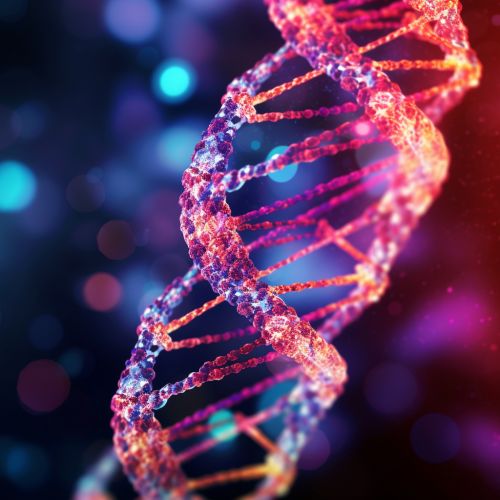Retrotransposons and Genome Evolution
Introduction
Retrotransposons are sequences of Deoxyribonucleic Acid that can move around to different positions within the genome of a single cell, a process called retrotransposition. They are a subset of transposable elements, which are found in the DNA of most organisms. Retrotransposons are particularly abundant in eukaryotic genomes and have been found to play a significant role in genome evolution.


Classification
Retrotransposons are classified into two main categories: Long Terminal Repeat (LTR) retrotransposons and Non-Long Terminal Repeat (Non-LTR) retrotransposons. LTR retrotransposons are similar in structure and replication to retroviruses, while Non-LTR retrotransposons replicate by a mechanism called target-primed reverse transcription (TPRT).
Long Terminal Repeat (LTR) Retrotransposons
LTR retrotransposons are characterized by long terminal repeats at both ends of the element. These repeats are necessary for the integration of the retrotransposon into the host genome. LTR retrotransposons are further divided into several families, including Gypsy, Copia, and BEL.
Non-Long Terminal Repeat (Non-LTR) Retrotransposons
Non-LTR retrotransposons do not have long terminal repeats. They are further divided into two main groups: Long Interspersed Nuclear Elements (LINEs) and Short Interspersed Nuclear Elements (SINEs). LINEs are autonomous elements that encode the proteins necessary for their own retrotransposition, while SINEs are non-autonomous and rely on the proteins encoded by LINEs for their retrotransposition.
Retrotransposition Mechanism
Retrotransposons move within the genome through a "copy-and-paste" mechanism. This process begins with the transcription of the retrotransposon into Ribonucleic Acid, which is then reverse transcribed into DNA by the enzyme reverse transcriptase. The resulting DNA molecule is integrated into a new location in the genome.
Role in Genome Evolution
Retrotransposons have played a significant role in shaping the structure and function of eukaryotic genomes. They contribute to genome size expansion, gene creation, and genome rearrangement. Retrotransposons can also influence gene expression and function as regulatory elements.
Genome Size Expansion
Retrotransposons are a major contributor to genome size variation among eukaryotes. The proliferation of retrotransposons can lead to a substantial increase in genome size, as seen in many plant and animal species.
Gene Creation
Retrotransposons can contribute to the creation of new genes. This can occur through the process of exon shuffling, where a retrotransposon inserts itself into a gene and brings with it a new exon, leading to the creation of a novel protein-coding sequence.
Genome Rearrangement
Retrotransposons can cause genome rearrangements, such as deletions, duplications, inversions, and translocations. These rearrangements can have significant evolutionary consequences, potentially leading to the creation of new species.
Influence on Gene Expression
Retrotransposons can influence gene expression in several ways. They can act as alternative promoters, enhancers, or silencers, and can influence the splicing of pre-mRNA. Retrotransposons can also cause epigenetic changes that affect gene expression.
Conclusion
Retrotransposons are a powerful force in genome evolution. Their ability to move within the genome, create new genes, cause genome rearrangements, and influence gene expression has shaped the structure and function of eukaryotic genomes in profound ways. While retrotransposons can cause genetic instability and disease, they also contribute to the diversity and adaptability of life on Earth.
